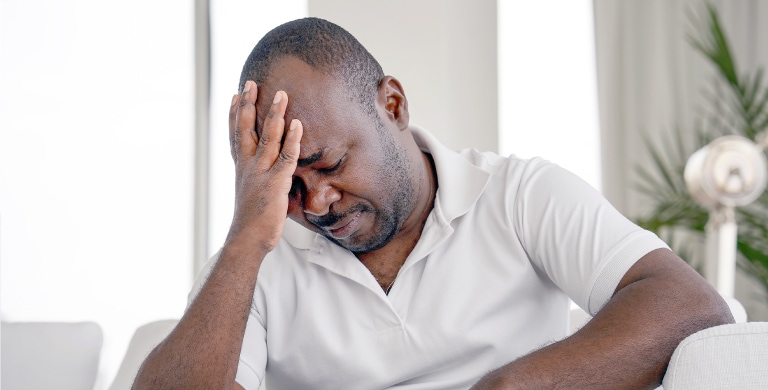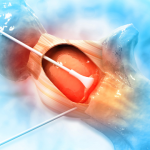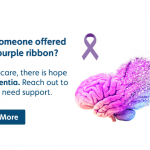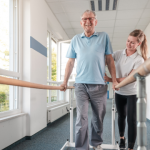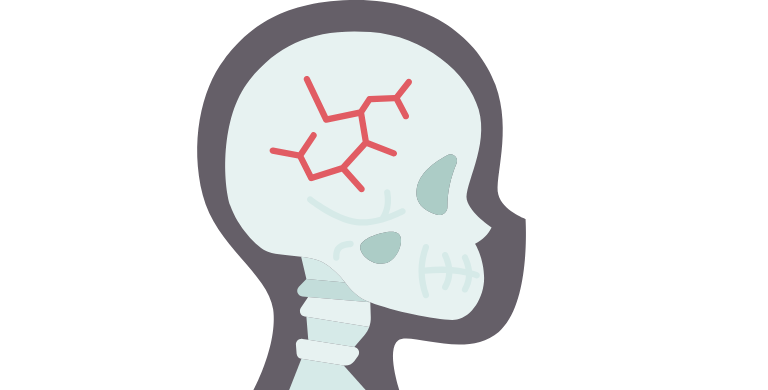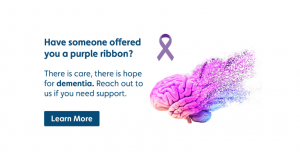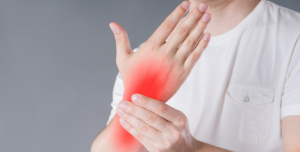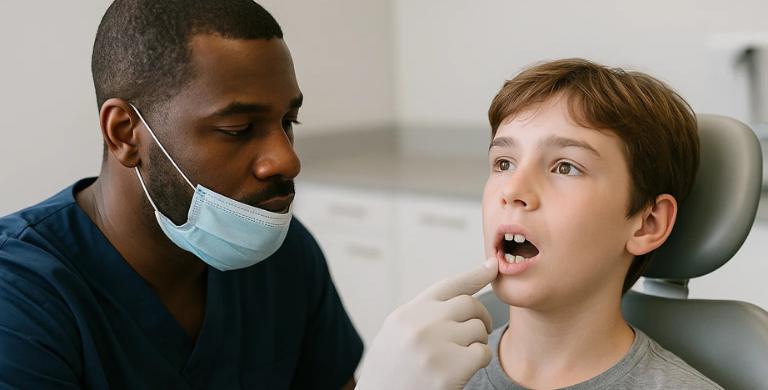Strokes are a leading cause of death and disability in South Africa and does not only affect the elderly. One in five stroke victims are between the ages of 25 to 55. Many strokes can be prevented as they are often caused by high blood pressure, smoking, obesity, diabetes, lack of physical activity, an unhealthy diet, alcohol intake, and stress.
What is a stroke?
A stroke is sometimes called a ‘brain attack’. A stroke can injure the brain like a heart attack can injure the heart. It happens when the blood supply to part of the brain is interrupted by either the blockage to an artery in the brain or the rupturing (bursting) of an artery in the brain. This starves the brain of vital oxygen and nutrients leading to brain damage, or death. There are two main types of strokes:
- ‘Ischemic strokes’ caused by blood clots: A small blood clot may form in a blood vessel and then block an artery in the brain. Sometimes this blood clot may develop in another part of your body, and then travel in the blood vessels to the brain and get stuck, blocking the blood vessel. More than 80% of strokes are ischemic.
- ‘Haemorrhage strokes’ caused by bleeding: When a blood vessel in the brain bursts (ruptures), it bleeds into the brain and damages it. This is the most dangerous kind of stroke.
Both a blockage and a rupture require emergency treatment as both are considered life-threatening.
Strokes can be treated, but you need to act fast. Signs and symptoms range from numbness or weakness on one or both sides of the body, issues with balance, blurred vision, facial droop, changes in speech and a crushing headache.
What problems may stroke survivors face?
- Speech difficulties
- Balance and memory loss
- Mobility issues
- Struggles with daily tasks e.g., hygiene and writing
- Depression or anxiety
- Emotional outbursts
Recovering from stroke and rehabilitation
Strokes can forever change the way people live their lives. Because the brain controls all the body’s movements, brain damage often manifests as loss of movement and strength in one side of the body. However, this loss doesn’t have to be permanent.
Stroke rehabilitation can begin as early as two days after a stroke with recovery exercises or treatments that are integrated with a patient’s stroke treatment plan. Doctors know that quality of life after a stroke is just as important as surviving the stroke itself, and patients can regain muscle control sooner if they keep their muscles stimulated in the right ways.
Recovery from stroke is a gradual and usually a life-long process. Many people with stroke may make a full recovery, but others can be left with permanent disabilities, so it is important to set a few realistic goals. The purpose of rehabilitation is to adapt to any physical problems that may have developed because of the stroke and regain as much independence and confidence as possible. Patients may need to learn new ways of doing everyday activities to help them overcome any of the changes that have happened to their body after the stroke.
The rehabilitation team and recovery programme
The number of services a stroke victim needs, depends on the effects of the stroke and what he or she needs to be independent. They may need the services of some of the following healthcare professionals:
- Doctor: who may be a specialist, or a general practitioner (GP), is responsible for providing supervision and attending to any stroke-related medical problems.
- Nurse: will help with daily care, such as taking medications, bathing, dressing and toileting, until someone can manage on their own.
- Physiotherapist: will tailor special exercises and techniques to improve muscle control, balance, and mobility, walking, transferring (from chair to bed or bed to chair, etc.), or self-propelling a wheelchair if patients are having difficulty using their limbs, getting their balance or co‐ordinating movements.
- Occupational therapist: can help patients improve and make the best use of their physical and mental abilities in everyday life and will assist with self-care skills such as feeding, grooming, bathing, toileting, and dressing.
- Speech therapist: will treat swallowing problems, difficulty in speaking, understanding speech, reading, or writing, and will improve patients’ speech or teach them other ways to communicate.
- Dietitian: will assist with the choice of foods for swallowing problems (e.g., he/she may order meals that are soft and easy to swallow). They can also help to plan healthy meals, if there are any dietary problems such as weight or high cholesterol levels.
- Psychologist: can help with emotional problems, or cognitive skills such as memory or problem solving.
- Social worker: can help stroke victims and their families deal with the feelings of anger, sadness, depression, confusion, and anxiety that are common after a stroke. They can also teach social skills for interacting with other people.
The family
Stroke affects not only the patients, but also their families. The family has an important role to play in actively participating in the stroke victim’s rehabilitation. However, stroke can be a challenge for the whole family. If a patient lost his or her independence, it could mean that their family will have to cope with some changes in their lives too. Sometimes this can upset family life. Everyone will need to take time to adjust to this new way of life.
While the severity of stroke and speed of treatment play essential roles in determining a patient’s symptoms, rehabilitation is key to recovery after stroke. Stroke rehabilitation is the most important factor in determining a patient’s long-term outcome, as it helps patients relearn, adapt, or change how they live.
References and sources
- Heart & Stroke Foundation South Africa - www.heartfoundation.co.za/life-after-a-stroke/
- Everyday Health - www.everydayhealth.com/stroke/telemedicine-for-stroke-care-and-rehabilitation/
- Heart Attack and Stroke Symptoms - www.heart.org/en/professionals/stroke-resource-library/post-stroke-care/patient-focused-rehab-resources/what-to-expect-at-rehab
- American Stroke Association - www.stroke.org
Fostering recovery and restoring health
The four physical rehabilitation hospitals feature 36 to 52 beds, ensuring personalised attention and an intimate healing environment. Here, patients work towards regaining their strength, mobility, and independence under our multidisciplinary team of experienced professionals, including general medical practitioners, case managers, physiatrists, nurses, physiotherapists, occupational therapists, speech therapists, psychologists, dieticians and social workers. They all work together to create comprehensive, customised treatment plans.
Recover in an environment that offers best-practice care, facilities and comfort.

